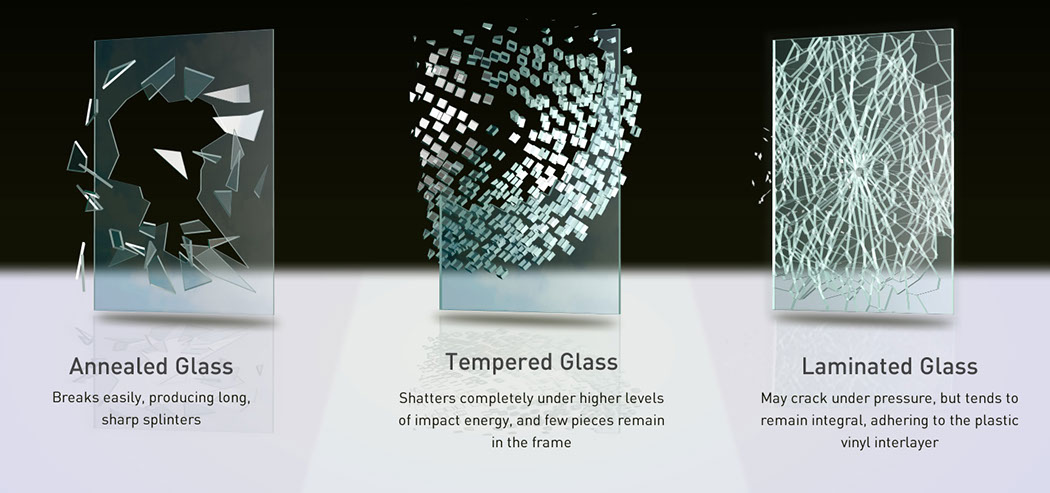

Annealed glass is produced through a meticulous process of slow
cooling, which allows for the release of internal pressure accumulated
during heating. This careful annealing enhances the durability and
overall strength of the glass, making it less likely to crack or
shatter than non-annealed glass. However, while it is stronger than
untreated glass, annealed glass is inherently weaker than tempered
glass.
One major difference between the two types is in
their breakage characteristics: tempered glass shatters into smaller,
harmless pieces, while annealed glass breaks into larger, sharper
shards, which can pose a greater risk.
Several features
make annealed glass an ideal choice for specific applications:
Overall, while annealed glass may not have the same resilience as tempered glass, its unique features and cost benefits make it a valuable option in a variety of applications.
Tempered glass, often mistaken for regular glass, is renowned for its exceptional strength. Factors like the heat-treating process and the glass's thickness significantly affect its strength. On average, tempered glass is approximately four times more robust than standard annealed glass. While not entirely unbreakable, it is an excellent choice for safety-conscious applications due to its remarkable resistance to damage. In the event of a break, tempered glass shatters into small, granular pieces instead of large, dangerous shards, minimizing injury risk. It is well-suited for several applications, including storefronts, vehicles, shower enclosures, and diverse industrial uses.
Laminated glass is designed to mitigate or eliminate dangerous shards
during breakage. It consists of at least two layers of annealed or
tempered glass, bonded together by a synthetic material like PVB
(polyvinyl butyrate) or EVA (ethylene-vinyl acetate). This bonding
material helps secure the glass layers together, preventing breakage
and loose shards. Upon impact, laminated glass tends to hold shards in
place and can create a distinctive “spider web” fracture pattern,
absorbing the impact force. Even a basic two-layer laminated glass
piece is stronger than a single layer of annealed or tempered glass.
Manufacturers often enhance their products by incorporating thicker
glass layers or laminating multiple layers together with sheets of
synthetic material between them. The strongest laminates are utilized
in products like bulletproof glass and cockpit windows on commercial
airliners.
While laminated glass offers numerous advantages for
homeowners and business operators, it is notoriously challenging to
cut because it requires penetration of at least two layers of glass
and the synthetic material between them.
Due to its ability to resist catastrophic breakage, laminated glass is a favored choice for various residential and commercial applications. For instance, laminated windows will not crumble when cut from one side, thereby deterring potential burglaries. Additionally, these windows can significantly reduce noise pollution. During severe storms, laminated windows protect your property’s interior from airborne debris and high-speed winds, offering an extra layer of safety against natural disasters like earthquakes, particularly common in the Los Angeles area.
Senior Discount (55+): Present a valid ID for this special discount to be applied. Please note that this offer cannot be combined with other promotions.